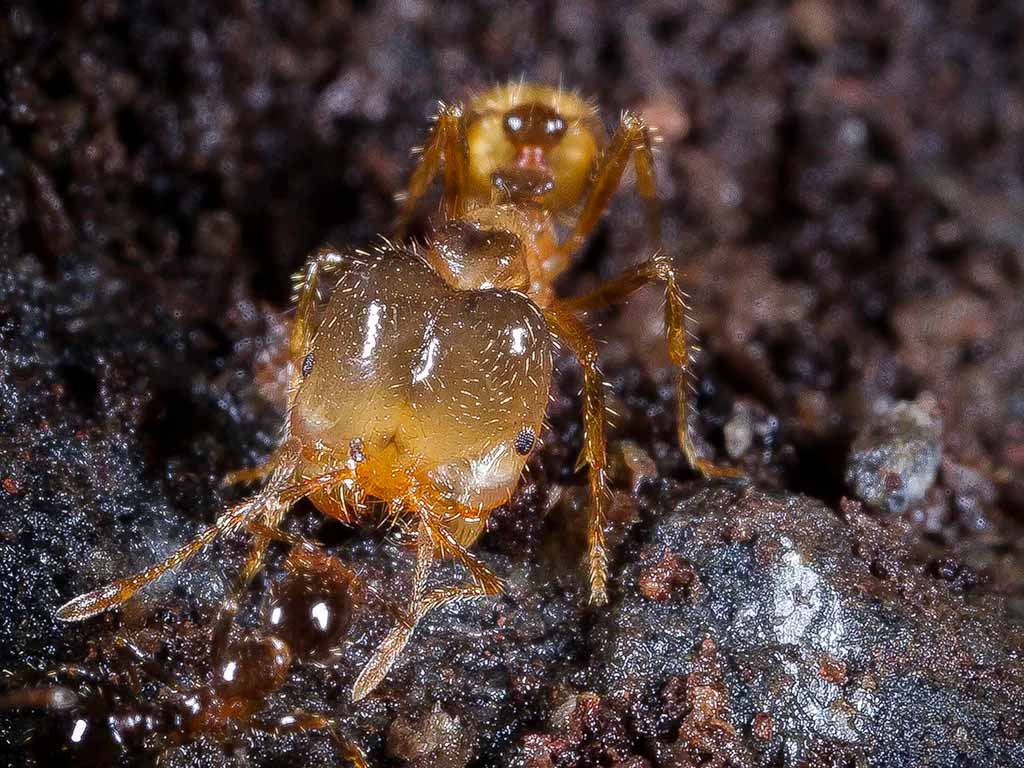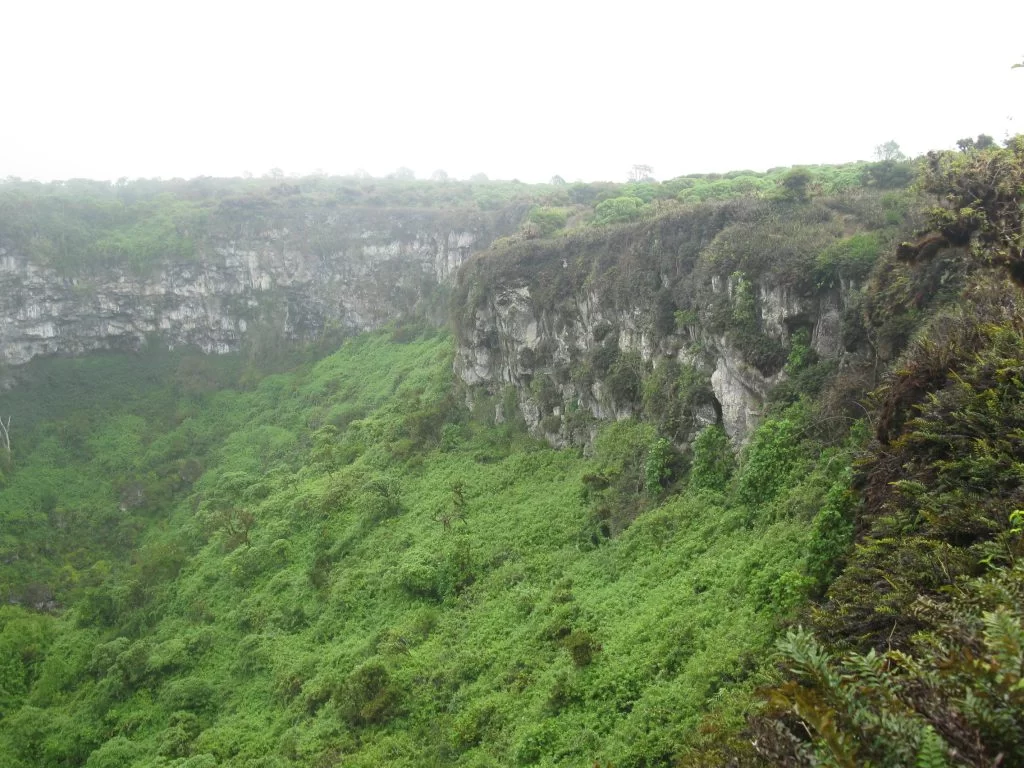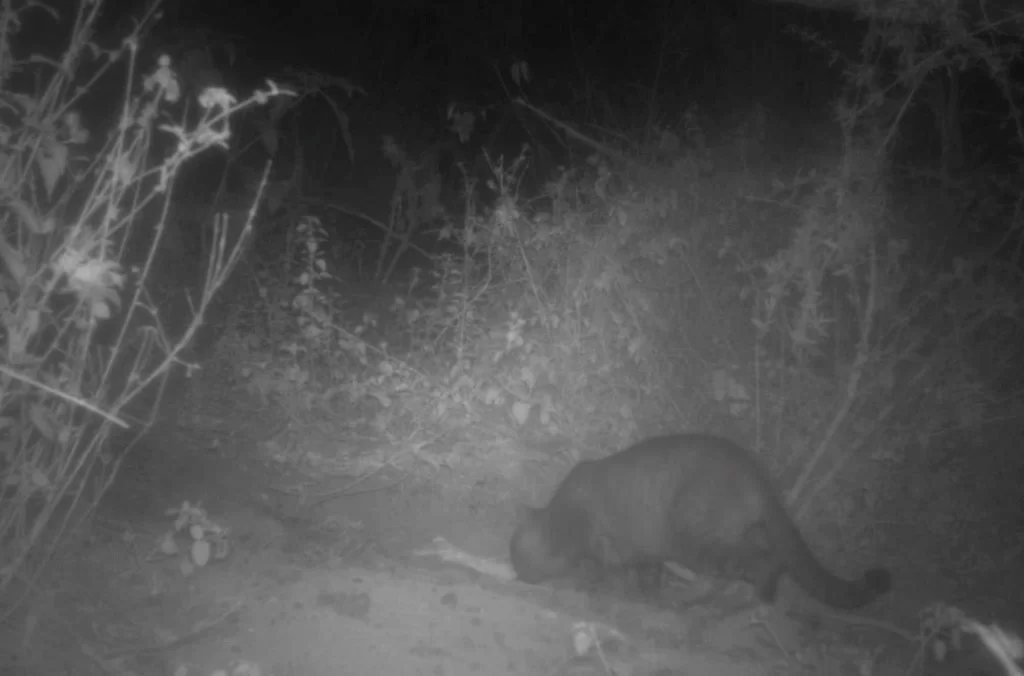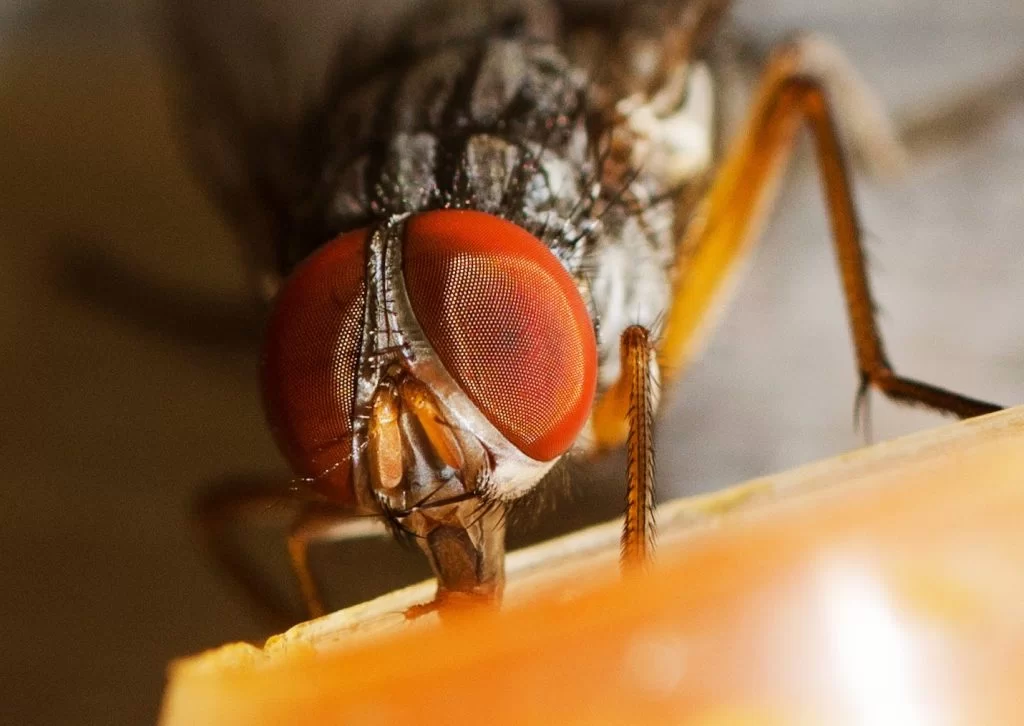Invasive species pose a threat to ecosystems and wildlife in Galapagos. Invasive insects can be tiny, but they are powerful invaders. Inadvertently, the avian Vampire Fly was introduced to Galapagos in 1960s. It was introduced onto poultry. It is now widespread in the Islands. Its bloodsucking larvae kill and maim most small landbird species. Introduced Fire Ants can also attack ground-dwelling species and even tortoise hatchlings.

Fire Ant © Galápagos National Park Directorate
Blackberry and Guava, invasive plants, overtake ecosystems and choke native plants. Other species are also affected by invasive plants like Blackberry and Guava. This includes insects that pollinate native plant species, birds such as the Vermillion Flycatcher, which require open habitats without invasive plants to forage, as well the reptiles of Galapagos, like tortoises, that depend on native plants for their food.

Blackberry groundcover at Los Gemelos © Joshua Vela/Galápagos Conservancy
My pet cat is my best friend at home. But in Galapagos introduced feral cats can become formidable predators. They can eat small birds, young tortoises and Lava Lizards. This can lead to rapid population declines. Adult Land Iguanas have suffered the most from free-roaming dogs on many of their islands. Canine distemper is also a problem for dogs and can pose a serious threat to beach-dwelling Sea Lions. Galapagos Conservancy promotes responsible pet ownership in the Islands through a partnership with WorldVet. This allows for sterilization and vaccination of cats and dogs.
Galapagos’ most destructive invasive mammal, the Black Rat, has been known to be an ecosystem-destroyer worldwide. These rodents eat tortoise eggs, birds eggs, native insects, as well as seeds from many plants. Native species are at risk of extinction from invasive rats: With only 20-30 Mangrove Finches left today, this species is considered Critically Endangered. This may partly be due to cats and rats attacking their nests. Black Rats have largely driven the native Rice Rats, and their endemic snails, to extinction.

Feral cat caught on wildlife camera © Galápagos Conservancy
Galapagos Conservancy supports the Agency for the Regulation and Control of Biosecurity and Quarantine for Galapagos for five years. This agency conserves biodiversity by responding to the spread of invasive species and diseases that are transmissible to humans and wildlife. These agencies do amazing work and benefit from Galapagos Conservancy’s critical funding to address emergencies.
Galapagos Conservancy and ABG will continue to fight for the preservation of Galapagos from invasive species. They are like the amazing people I know in the U.S. clearing the prairies of invasive Buckthorn, and saving the American Chestnut from near extinction.



